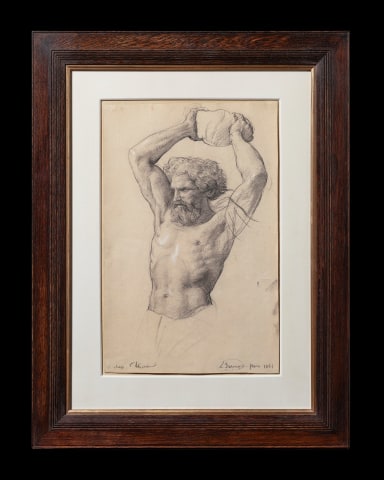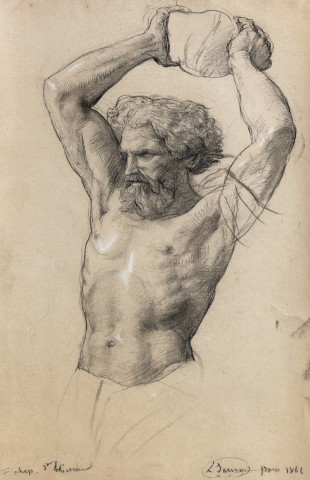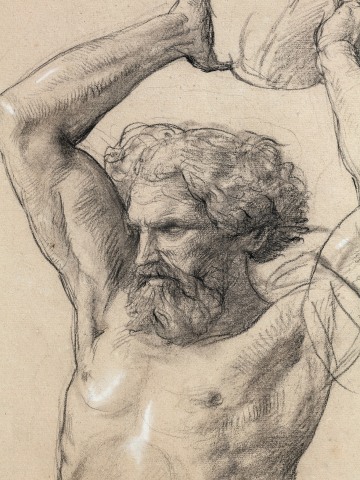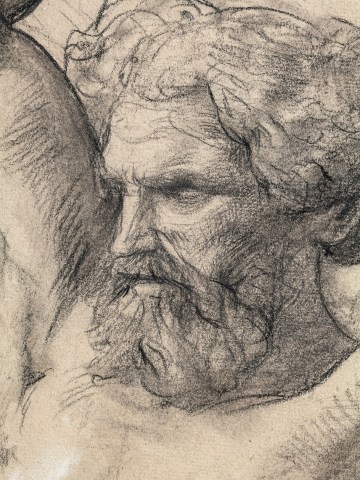Further images
Louis Janmot was a crucial figure in bridging the gap between Romanticism and Symbolism, two movements that both emphasised emotion, individual experience, and the transcendence of reality. Initially trained in the classical traditions of the École des Beaux-Arts, Janmot’s early works displayed the emotional depth and dramatic intensity of Romanticism, with a focus on the inner turmoil and spiritual struggles of his subjects. However, as his career progressed, his work began to evolve toward Symbolism, a movement that sought to represent the deeper, often hidden realities of the human condition through metaphor and allegory. His most significant work, Le Poème de l'âme, a series of paintings that narrate a spiritual journey, exemplifies this shift. While Romanticism explored the emotional and psychological depths of human experience, Symbolism took these ideas further, suggesting that art could reveal truths beyond the visible world, through suggestive, dream-like imagery. Janmot’s blending of these two approaches helped lay the groundwork for later Symbolist painters, positioning him as a key transitional figure in 19th-century art.
The 1860s were a pivotal decade for Louis Janmot, marking a crucial shift in his artistic evolution. During this time, he moved beyond traditional Romanticism toward a more introspective and Symbolist approach. His magnum opus, Le Poème de l'âme (The Poem of the Soul), created between 1860 and 1865, exemplified this change, exploring the spiritual journey of the soul through allegorical and symbolic imagery. The work’s focus on metaphysical themes and inner emotional states reflected Janmot’s growing interest in depicting the unseen, a hallmark of Symbolism. This period also coincided with a time of political and cultural upheaval in France, which influenced Janmot’s exploration of existential and spiritual questions, setting the stage for his later contributions to Symbolist art.







